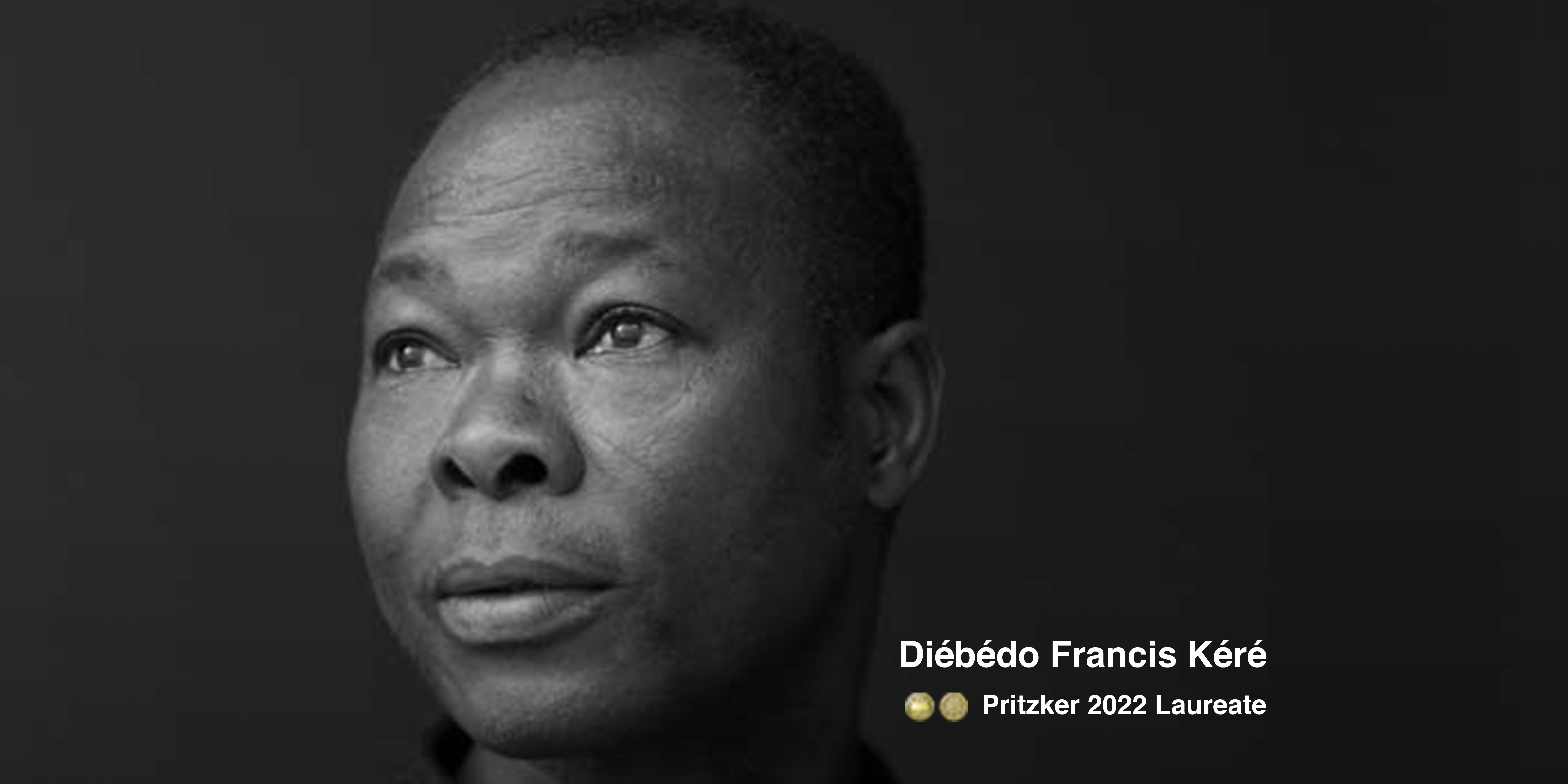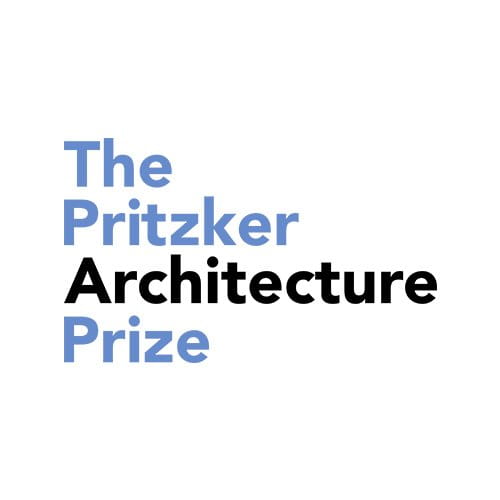
Francis Kéré becomes the first person from Burkina Faso and the only African to win Pritzker Architecture Prize
“We are interlinked, and concerns in climate, democracy, and scarcity are concerns for us all,” says Francis Kéré, as part of his Pritzker Prize 2022 acceptance speech. He is the 51st Laureate of what is regarded as architecture’s highest honour — the Pritzker Architecture Prize.
Announced by Tom Pritzker, chairman of the Hyatt Foundation, Kéré’s architecture was defined as “pioneering” and one that is “sustainable to the earth and its inhabitants, especially in the land of extreme scarcity”. Working primarily in the marginalised countries, which often deal with scarcity and lack of infrastructure, Kéré’s work is predominantly public in its spirit. His architecture works span public institutions, health facilities, housing, schools, institutions and public spaces, bringing much-needed infrastructure to the region, often characterised by extreme scarcity.
“He is equally architect and servant, improving upon the lives and experiences of countless citizens in a region of the world that is at times forgotten,” comments Pritzker. “Through buildings that demonstrate beauty, modesty, boldness and invention, and by the integrity of his architecture and geste, Kéré gracefully upholds the mission of this Prize.”
9658.jpg)
60224.jpg)
49278.jpg)
49500.jpg)
Founded in 2005, Kere Architecture, with a dual focus on design and social commitment, operates in regions neglected by the contemporary architecture community. Francis Kéré laid the foundation for the eponymous firm during his time as a student at the Technical University of Berlin, where he raised funds internationally for his first building in 2001 — Gando Primary School. This project — carried out with the local community and with limited resources — garnered critical acclaim, winning him the prestigious Aga Khan Award for Architecture.
The success of Gando Primary School led to the establishment of Kéré Foundation in 2005, to serve the inhabitants of Gando through the development of projects, partnerships and fundraising. Born in Gando, Burkina Faso, Kéré went to Berlin to study architecture and founded his practice where still most of the work is done.
“I am hoping to change the paradigm, push people to dream and undergo risk. It is not because you are rich that you should waste material. It is not because you are poor that you should not try to create quality,” says Kéré. “Everyone deserves quality, everyone deserves luxury, and everyone deserves comfort.”
Rooted in place, his architecture is guided by the power of materiality and showcasing a cultural sensitivity, delivering social and environmental justice. His highly performative architecture often includes double roofs, thermal mass, wind towers, indirect lighting, cross ventilation and shade chambers as some of his core strategies. His architecture often reminds us of the importance of creating a sense of community and the poetic expression of light — often laced with symbolism. His work is at the interception of utopia and pragmatism, creating architecture that explores new articiptory design methods and innovative use of local resources, creating their own precedents.
6439.jpg)
91942.jpg)
57463.jpg)
_040978.jpg)
77175.jpg)
The jury citation states, “Kéré contributes to the debate by incorporating local, national, regional and global dimensions in a very personal balance of grass roots experience, academic quality, low tech, high tech, and truly sophisticated multiculturalism.”
“He has developed a sensitive, bottom-up approach in its embrace of community participation. At the same time, he has no problem incorporating the best possible type of top-down process in his devotion to advanced architectural solutions. His simultaneously local and global perspective goes well beyond aesthetics and good intentions, allowing him to integrate the traditional with the contemporary.”
Many of Kéré’s built works are located in Africa, in countries including the Republic of Benin, Burkino Faso, Mali, Togo, Kenya, Mozambique, and Sudan. Pavilions and installations and have been created in Denmark, Germany, Italy, Switzerland, the United Kingdom and the United States. Significant works also include Xylem at Tippet Rise Art Centre (2019, Montana, the United States), Léo Doctors’ Housing (2019, Léo, Burkina Faso), Lycée Schorge Secondary School (2016, Koudougou, Burkina Faso), the National Park of Mali (2010, Bamako, Mali) and Opera Village (Phase I, 2010, Laongo, Burkina Faso).
8963.jpg)
25807.jpg)
16584.jpg)
Jury Members
Alejandro Aravena (Chair). Architect, Educator and 2016 Pritzker LaureateSantiago, Chile
Barry Bergdoll Architecture Historian, Educator, Curator and AuthorNew York, New York
Deborah Berke Architect and Dean, Yale School of ArchitectureNew York, New York
Stephen Breyer U.S. Supreme Court JusticeWashington, DC
André Aranha Corrêa do Lago Architectural Critic, Curator and Brazilian Ambassador to IndiaDelhi, India
Kazuyo Sejima Architect and 2010 Pritzker LaureateTokyo, Japan
Wang Shu Architect, Educator and 2012 Pritzker LaureateHangzhou, China
Benedetta Tagliabue Architect and EducatorBarcelona, Spain
Manuela Lucá-Dazio (Executive Director) Paris, France
Biography
Francis Kéré (b.Diébédo Francis Kéré, 1965) was born in Burkina Faso – one of the world’s least educated and most impoverished nations, a land void of clean drinking water, electricity and infrastructure, let alone architecture.
“I grew up in a community where there was no kindergarten, but where community was your family.Everyone took care of you and the entire village was your playground.My days were filled with securing food and water, but also simply being together, talking together, building houses together.I remember the room where my grandmother would sit and tell stories with a little light, while we would huddle close to each other and her voice inside the room enclosed us, summoning us to come closer and form a safe place.This was my first sense of architecture.”
Kéré was the oldest son of the village chief and the first in his community to attend school, only the city of Gando didn’t have a school, so he left his family at the age of seven.His small childhood classroom in Tenkodogo was constructed of cement blocks and lacked ventilation and light.Trapped in that extreme climate with over one hundred classmates for hours at a time, he vowed to one day make schools better.
“Good architecture in Burkina Faso is a classroom where you can sit, have light that is filtered, entering the way that you want to use it, across a blackboard or on a desk.How can we take away the heat coming from the sun, but use the light to our benefit? Creating climate conditions to give basic comfort allows for true teaching, learning and excitement.”
In 1985, he uprooted again, this time, much further from home, traveling to Berlin on a vocational carpentry scholarship, learning to make roofs and furniture by day, while attending secondary classes at night.He was awarded a scholarship to attend Technische Universität Berlin (Berlin, Germany) in 1995, graduating in 2004 with an advanced degree in architecture.
Although far from Burkina Faso, Kéré’s mind never strayed from his native homeland.He recognized the responsibility of his privilege, establishing the foundation “Schulbausteine für Gando e.V.”, translated to “school building blocks for Gando” and later renamed Kéré Foundation e.V., in 1998 to fundraise and advocate for a child’s right to a comfortable classroom.His first building, Gando Primary School (2001, Gando, Burkina Faso), was built by and for the people of Gando.Locals offered their input, labor and resources from conception to completion, crafting nearly every part of the school by hand, guided by the architect’s inventive forms of indigenous materials and modern engineering.
The success of Gando Primary School awarded him the Aga Khan Award for Architecture in 2004, and was the catalyst for establishing his practice, Kéré Architecture, in Berlin, Germany in 2005.The realization of additional primary, secondary, postsecondary and medical facilities soon followed throughout Burkina Faso, Kenya, Mozambique and Uganda.Kéré’s built works in Africa have yielded exponential results, not only by providing academic education for children and medical treatment for the unwell, but by instilling occupational opportunities and abiding vocational skills for adults, therefore serving and stabilizing the future of entire communities.
With each trip back to Gando, Kéré has bestowed purposeful ideas, technical knowledge, environmental understanding and aesthetic solutions, but his service to humanity through cultural sensitivity, process of engagement and devotion proves as a constant example of generosity to the world.“I considered my work a private task, a duty to this community.But every person can take the time to go and investigate from things that are existing.We have to fight to create the quality that we need to improve people’s lives.”
His work has expanded beyond school buildings in African countries to include temporary and permanent structures in Denmark, Germany, Italy, Switzerland, the United Kingdom, and the United States.Two historic parliament buildings, the National Assembly of Burkina Faso (Ouagadougou, Burkina Faso) and Benin National Assembly (Porto-Novo, Republic of Benin), have been commissioned, with the latter currently under construction.
Additional awards include the Cité de l’Architecture et du Patrimoine’s Global Award for Sustainable Architecture (2009), BSI Swiss Architectural Award (2010); the Global Holcim Awards Gold (2012, Zurich, Switzerland), Schelling Architecture Award (2014); Arnold W Brunner Memorial Prize in Architecture from the American Academy of Arts & Letters (2017); and the Thomas Jefferson Foundation Medal in Architecture (2021).
The architect has been a visiting professor at the Harvard University Graduate School of Design (Massachusetts, United States), Yale School of Architecture (Connecticut, United States), and holds the inaugural Chair of Architectural Design and Participation professorship at the Technische Universität München (Munich, Germany) since 2017.He is an Honorary Fellow of Royal Architectural Institute of Canada (2018) and the American Institute of Architects (2012) and a chartered member of the Royal Institute of British Architects (2009).
Kéré is a dual citizen of Burkina Faso and Germany and spends his time professionally and personally equally in both countries.
SUBSCRIBE TO OUR NEWSLETTER



IMAGE GALLERY
SHARE ARTICLE
COMMENTS